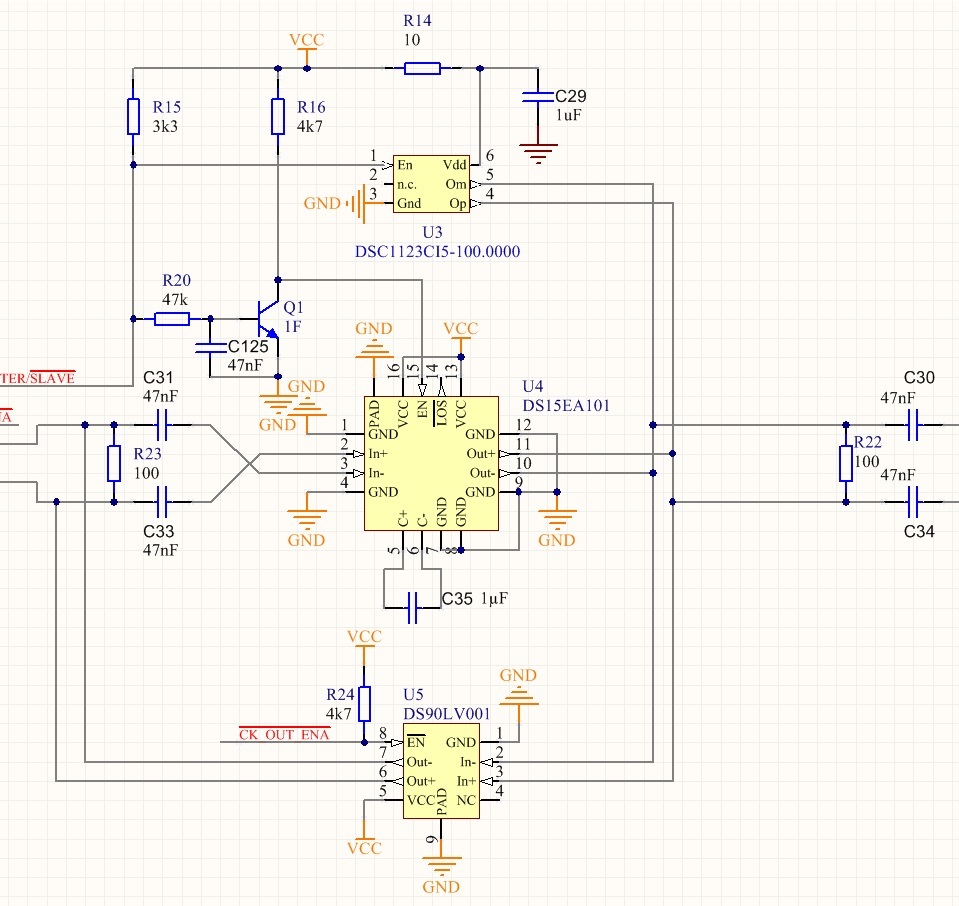Other Parts Discussed in Thread: DS90LV001
By the way, does anyone know what exactly EN pin does?
Have 2 lvds clocks electrically paralleled (=wire or'ed), one from a DSC1123 100MHz mems oscillator, and the other from an incoming diff pair.
The latter gets equalized by this DS15EA101, when available and selected.
For selection, I do manage the EN pins for these two devices in order to change the source available on common output lines.
The strange i see is a low frequency on/off pattern superimposed on the 100Mhz clock. It varies in frequency as i do probe or touch the equalizer external capacitor at pins 5&6.
But EN is low! should'nt it disable the outputs, hence any influence of the ds15101 on it's outputs?
And, will the 50 ohm internall pull-up terminators stay there also when disabled?
Thanks for your help!
Francesco



